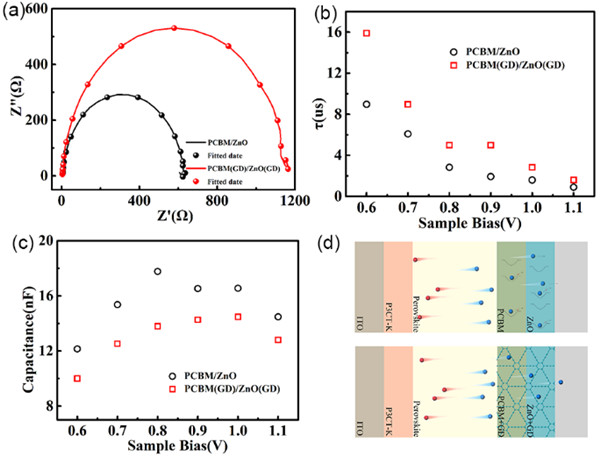
Graphdiyne (GD), an advanced full carbon nano structured material, is regarded as the most stable synthetic allotrope of carbon family for its unique structural characteristics of rigid carbon network, highly π-conjugated structure, a natural band gap and uniformly distributed pores.
All these features make a distinctive electron transfer enhancement possible through the interaction or bonding with inorganic nanoparticles, organic polymer and dye molecules. And the prospect of applying GD in the field of information technology, energy storage, photoelectric, catalysis, biology and medicine, etc. has been proposed.
Meanwhile, recent years have witnessed a rapid development of perovskite solar cells (PSCs), generally regarded as a representative of new generation of solar cells. The device interface properties play a significant role in determining PSCs performance, to be specific, on carrier extraction and device efficiency.
At present, further efforts on achieving high performance of PSCs is mainly hampered by difficulties in the morphology of interface layer and carrier transport capacity.
Recently, Carbon Based Energy Conversion Materials Research Team led by Prof. JIU Tonggang from Qingdao Institute of Bioenergy and Bioprocess Technology (QIBEBT) of the Chinese Academy of Sciences conducted a novel approach of dual doping GD into electron transport layers of PSCs, where the conductivity of electron transport layers was boosted, the resulting device performance was improved, and the certified power conversion efficiency (PCE) of 20% was obtained. Their findings were published in Nano Energy.
In this study, it is unraveled that the employment of dual doping GD is able to produce better film morphology of interface layers and electron transport efficiency occurring at PCBM and ZnO layers attributed to strong π-π stacking interaction between GD particles and PCBM/ZnO films.
Furthermore, it is manifested in the impedance test that carrier recombination at the interface is reduced, thus device filling factor is remarkably improved and the PCE is enhanced. In addition, capacitance-voltage measurement demonstrates a decrease of charge accumulations at the electrode interfaces after dual doping of GD, facilitating to reduce J-V hysteresis and ultimately exhibit an improved PCE of the device.
The introduction of GD, a novel carbon material, is confirmed to improve PSCs performance, providing some enlightenment for future studies on GD application as well as PSCs devices.
The project is supported by Natural Science Foundation of China, Major Basic Research Program of Shandong Natural Science Foundation, Youth Innovation Promotion Association of CAS and Scientific Research Starting Foundation of QIBEBT, CAS.

Figure 1. (a) device architecture of PSCs; (b) chemical structure of GD and electron transport; (c) J-V characteristic curve of PSCs; (d) device performances at different scanning directions. (Image by LI Jiangsheng)

Figure 2. (a) the impedance spectra; (b) electronic life under different bias voltage; (c) the capacitance of PSCs under different bias voltages;(d) the schematic diagram of effect of GD doping. (Image by LI Jiangsheng)

86-10-68597521 (day)
86-10-68597289 (night)

52 Sanlihe Rd., Xicheng District,
Beijing, China (100864)

